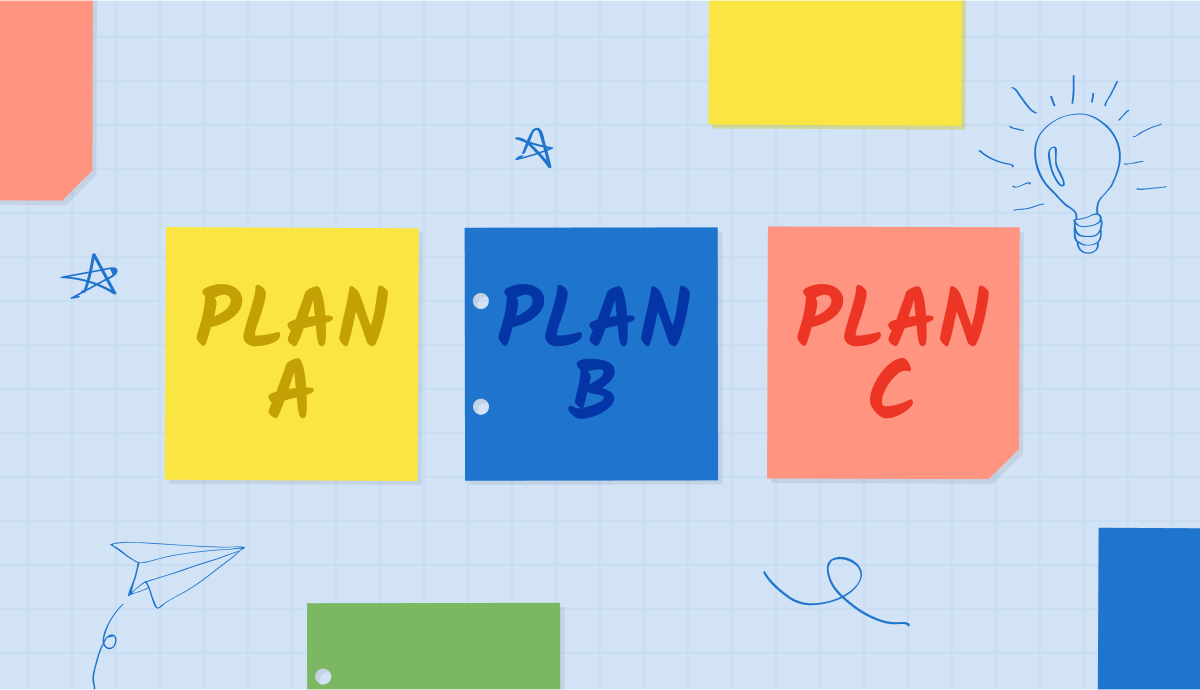
What is a Project Contingency Plan in Project Management?
Are You Building in a Project Contingency Plan?
One of the greatest risks to a professional services project is beginning it without scheduling any time for a project contingency plan. Unexpected challenges can always impact project delivery, even if this is a typical project, the client relationship is robust, and your team is more than capable of easily completing it. If a sudden obstacle strikes a professional services project, all of these advantages evaporate and service leaders are scrambling to identify a solution while maintaining proper resource utilization.
Project contingency plans for professional services projects, or people-centric work, is uniquely nuanced. Professional services projects often revolve around assumptions, expectations, and emotions that are inherently hard to predict. Project managers need to incorporate risk identification into their resource management, and project planning from the beginning. Consequently, the process of building a contingency plan for project management should really start before a project is even pitched to a prospect.
How to Build Contingency Plan for Project Management
The biggest mistake a project manager can make when planning a project is automatically allocating extra time to complex, potentially difficult tasks in the initial project plan. Although it seems reasonable, what the project manager is actually doing is communicating to the team that they can use extra time on more routine work. Aggregating and representing project contingency time in a single task is a better approach to project management.
When individual tasks don’t go according to plan, the amount of extra time it takes to complete them should be logged to the initial task. This method will highlight where deficiencies in the project planning or delivery process exist and hopefully prevent them from occurring again in the future.
Beyond incorporating contingencies into a plan at the high level, project managers should also carefully identify task dependencies, non-dependent tasks that are more flexible, and non-critical tasks. Knowing immediately where the flex in a task plan is will help project managers respond faster to issues and leverage the ideal resources. Whether it is shifting workloads around or negotiating with the client to reduce scope, not knowing which tasks are on the critical path will cause further uncertainty and impede optimal utilization.
Utilizing Project Budgets for Contingency Planning
Budgets suffer from the same issues as project plans in establishing contingency management. If a project manager adds a “float” to a budget, they will be more likely to use it. Instead, it is better to manage budgets on different levels: task, project, and engagement. Multi-level budgets enable project contingency management at a higher level, such as an engagement budget, while lower-level budgets represent the actual amount of work estimated to complete the project.
Project managers should also be aware of resources external to their project that could help reduce the risk of going over budget. These external resources could be subject matter experts, third-party contractors, or off the shelf solutions that may satisfy a segment of the client’s needs. Regardless of how well a project is going, it is important to know what resources are available and when it would make sense to deploy them. If a project is beginning to turn south, an external resource may just be able to save it.
Leveraging Schedules into Project Contingency Planning
When it comes to scheduling contingencies, the focus tends to be less about the total amount of work, and more about determining when the team can complete the work. Approaching a deadline and realizing that there simply are not enough hours remaining to complete a project is the worst-case scenario.
A good place to start is setting utilization expectations with the project team. Loosely communicated deadlines are rarely achieved. Be transparent about scheduling and project delivery goals to ensure everyone is on the same page.
Beyond setting proper task management expectations, it is also essential to keep a complete and up-to-date project schedule. We have covered the importance of scheduling in quite a few other posts—including how it relates to forecasts, fixed price projects, and improving profitability. As it relates to a contingency plan for project management, an up-to-date schedule provides the best chance for identifying projects that will be over budget or behind their targeted delivery date.
Bonus: Download a FREE guide to discover how to leverage project contingency components in an integrated manner using a PSA tool. Includes added strategies for project delivery success.
Building Contingencies into Project Teams
Project managers are continuously trying to eliminate uncertainty. Team leaders are building plans, checking progress, and communicating what will happen next, all in an effort to bring clarity to the health of an engagement. While the actions taken during a project are essential to its success, experienced project managers know that the makeup of the project team can be equally important.
Prior to starting a project, managers need to have a clear understanding of the skills needed to deliver the work, and the available capacity of the people in the organization with those skills. Depending on the complexity of the project, a good proficiency mix among the skills needed can also be an asset. A combination of junior and senior resources provide strong professional development opportunities for everyone involved, and will also allow managers to funnel work to the right person if the project is starting to slip.
While having the right project team is important, knowing the proper contact when trouble arises is also valuable. Including fresh talent can energize the existing team, provide new perspectives, or push a project past a roadblock. Performing a skill analysis before kicking off a project can help with your resource utilization strategy. Looking across your talent pool to identify not only who is the best match for the project team, but also who might be able to jump in if necessary is a good ace to have up your sleeve.
Knowing your Client and Their Operational Goals
A core component missing from many project contingency plans is the client’s role. Knowing your client’s priorities can help shape the type of flexibility you build into a project. If you know that on-time delivery is essential to your client, then focus on building contingencies into the project’s schedule. If you know that budget is a major concern, then focusing your planning and resource management towards that goal is essential. If you know that quality of work is paramount, then identifying the right skilled resources upfront will be rewarding throughout your project delivery.
Clients will likely prioritize a mix of quality, timeliness, and cost, but they may not all be weighted evenly. Knowing which levers to pull will make that awkward conversation around re-scoping a project a little easier. If project contingency planning is effectively integrated into your project management strategy, focusing on the right aspects of the project, everything should go according to plan.
A Common Theme Among All Project Contingency Plans
Data-driven conclusions are a common thread among all project contingency plans. Task dependencies, budget floats, schedule leveling, and skill and ability analysis all require information about your people, your projects, and your progress. Some professional services firms will have multiple tools that address each of these different areas. A holistic approach to creating a project contingency plan will give project managers a consolidated view of the entire delivery process.
Professional services automation (PSA) software specifically designed for project-centric service firms can stretch across the entire delivery process. Access to project plans, schedules, project performance analytics, and resource skill matrices in a single PSA system enables managers to leverage the different components of cost contingency planning in an integrated manner that drives a sustainable project delivery strategy.
Frequently Asked Questions About Project Contingency
What is contingency in project management?
A contingency plan in project management is a defined course of action(s) to follow to be able to identify and manage risks and unexpected events that may occur in the process of completing a project. The goal is to minimize the effect of unexpected project impacts to maintain the straightest path possible toward successful project delivery.
What is contingency cost in project management?
Cost contingency in project management, or a contingency budget, is a budget allocated to a project to fund unexpected events or risk management actions that may become necessary prior to project completion.
What to consider when building a project contingency plan?
Some things to consider when building a project contingency plan include:
- Don’t automatically allocate extra time to complex, potentially difficult tasks in initial project plan.
- Aggregate and represent project contingency time in a single task.
- Identify task dependencies, non-dependent tasks that are more flexible, and non-critical tasks.
- Manage project contingency budgets on different levels: task, project, and engagement.
- Know your client’s priorities to help shape the type of flexibility you build into a project.
- Be aware of resources external to a project that could help reduce risk of a budget overrun.
- Set utilization expectations with the project team.
- Be transparent about scheduling and project delivery goals so everyone is on the same page.
- Keep a complete and up-to-date project schedule.
- Perform a skill analysis before kicking off a project to help with resource utilization strategy.
How to manage contingency budget in project management?
Contingency budgets in project management should be managed on different levels: task, project and engagement. Multi-level budgets enable project contingency management at a higher level, such as an engagement budget, while lower-level budgets represent actual amount of work estimated to complete the project. It’s also key to know what external resources are available to a project in the event a project turns south.
What is contingency budget project management?
A contingency budget in project management is a budget allocated to a project to fund unexpected events or risk management actions that may become necessary prior to project completion.
What is contingency time in project management?
In project management, contingency time is extra time added to a schedule to take into account anticipated issues that may impact the schedule. When an issue occurs, the project manager uses this time to prevent negative effects that can result from the unexpected event(s).


-1.png)

